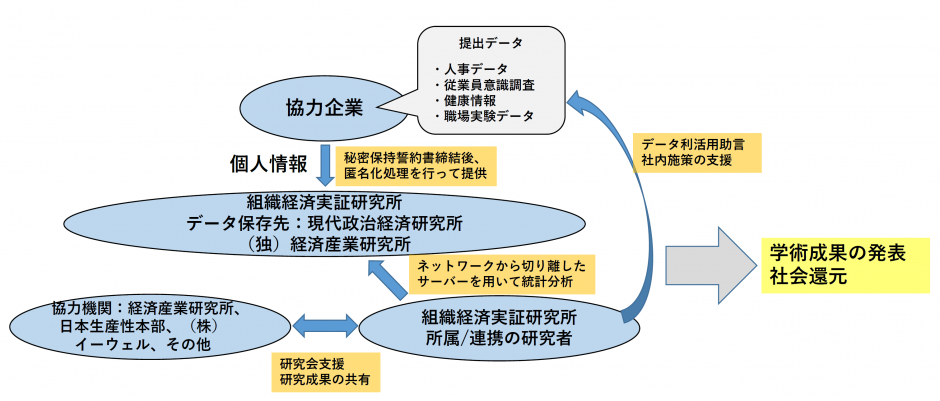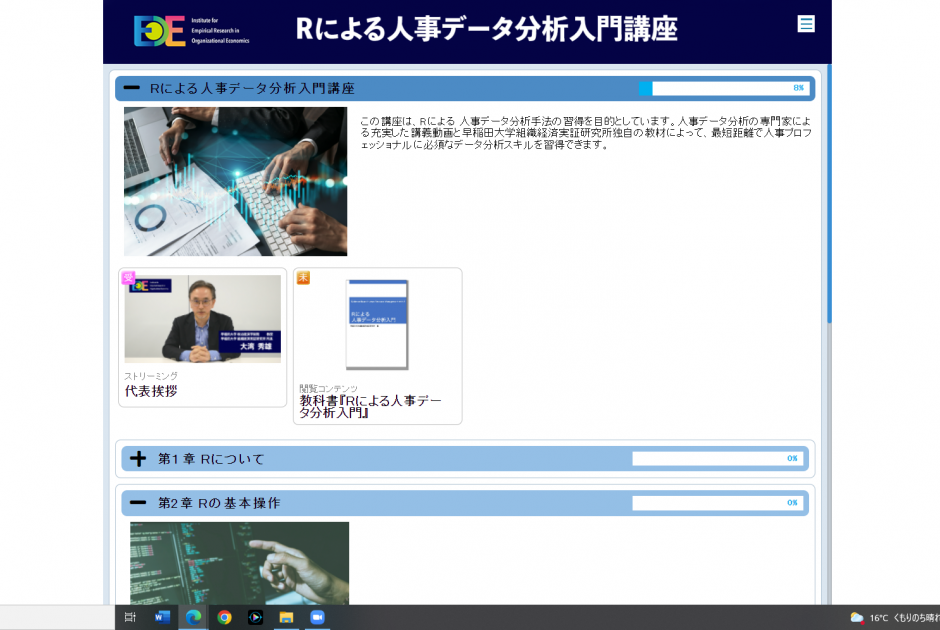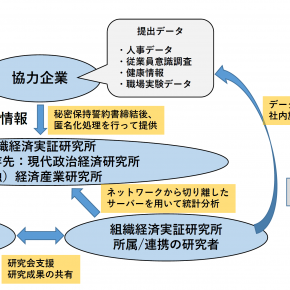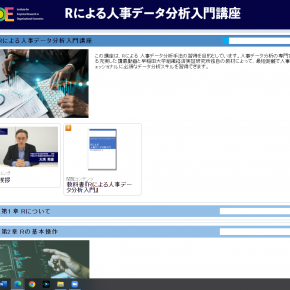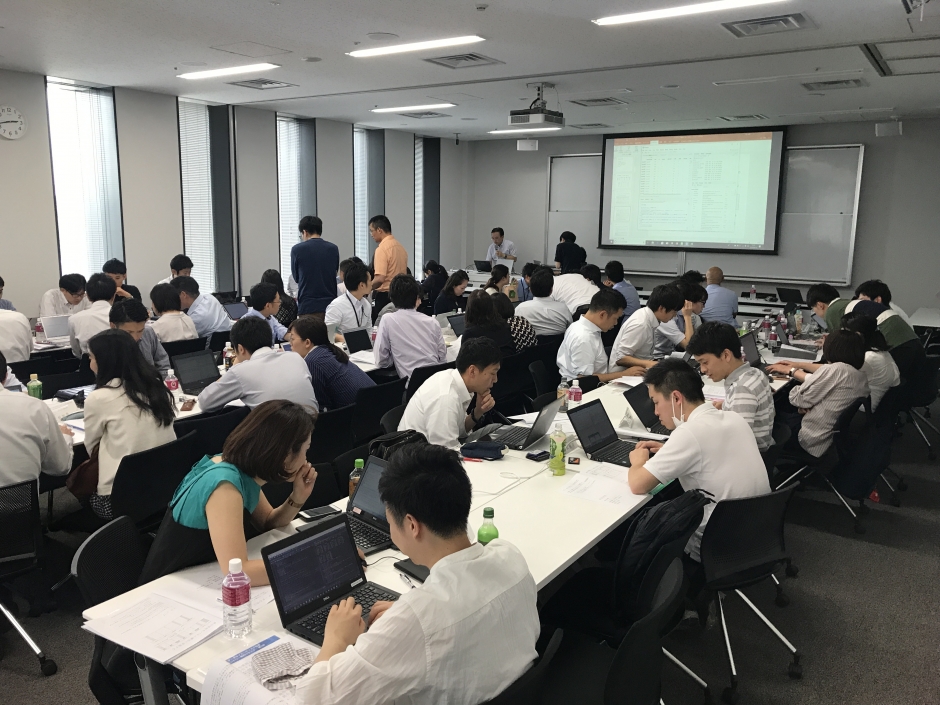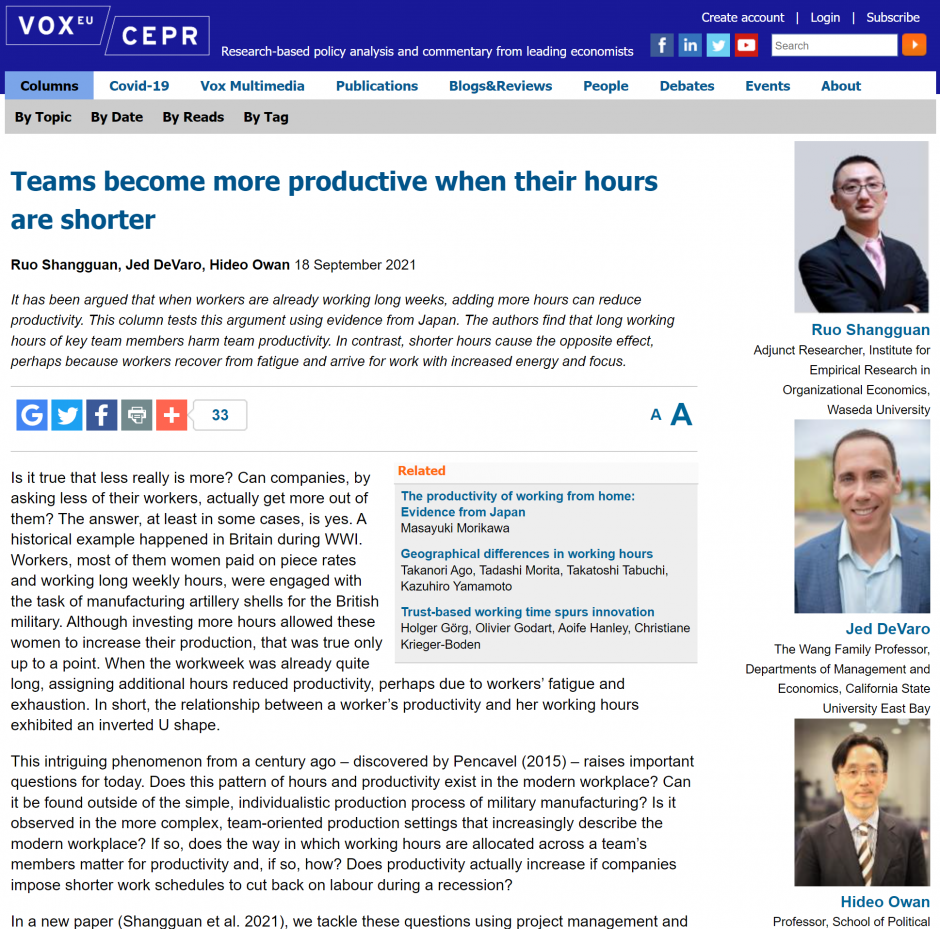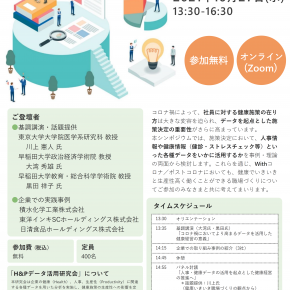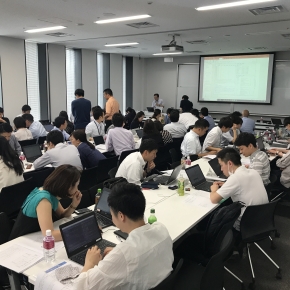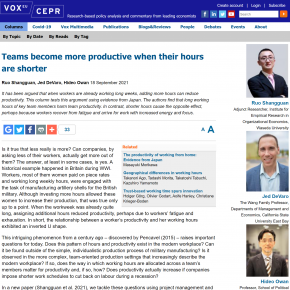Research Theme
Empirical research that leads to the elucidation of the function of internal labor markets and the optimal design of organizations in the fields of organizational economics, Personnel economics, and behavioral economics using data from within firms and HR service providers
Research Director
OWAN, Hideo
Faculty of Political Science and Economics, School of Political Science and Economics
Project Members
- ITOH, Hideshi Professor, Faculty of Commerce, Graduate School of Business and Finance
- KAWATA, Yuji Research Associate, Faculty of Political Science and Economics, School of Political Science and Economics
- KURODA, Sachiko Professor, Faculty of Education and Integrated Arts and Sciences, School of Education
- ONISHI, Koichiro Professor, Faculty of Education and Integrated Arts and Sciences, School of Education
- OWAN, Hideo Professor, Faculty of Political Science and Economics, School of Political Science and Economics
- AIZAWA, Toshiaki
- ASAI, Yukiko
- ASUYAMA, Yoko
- HIGUCHI, Aya
- KITAGAWA, Ritsu
- ONDA, Masayuki
- SATO, Kaori
- SATO, Koryu Guest Junior Researcher (Guest Assistant Professor), Comprehensive Research Organization
- SHANGGUAN, Ruo
- TAKEDA, Kunihiro
- UCHIDA, Yoshihiro
- YAMADA, Takafumi
Research Keywords
Productivity, human capital, managers, recruitment, gender inequality, talent development, evaluation, work style reform, mental health, innovation
Research Summary
Large disparities in firm productivity have been attributed to differences in management policies, labor quality, organizational structure, and managerial qualifications. In order to clarify why such heterogeneity exists within firms, empirical research utilizing within-firm data has become increasingly important in recent years. However, most of the previous studies have been based on ex-post evaluation of the effects of human resource management policies or measures within a company, and there have been few cases in which researchers have actively intervened together with management. This means that until a company introduces new measures, there is no opportunity to determine the efficiency of that measures, and as long as there is heterogeneity between companies that introduce measures and those that do not, it is difficult to avoid the criticism on external validity, i.e. what has been found in one company is not generalizable to other companies.
The data accumulated in companies today have changed significantly compared to 10 years ago. With the accumulation of information on employees’ and managers’ decision-making processes, communication, and evaluation of non-cognitive abilities, opportunities are emerging to observe human behavioral principles and selection processes at the individual level. Rather than looking at the effects of measures after the fact, we are establishing this research institute with the aim of searching for an opportunity more actively for researchers to examine what inefficiencies or opportunities for improvement are occurring at the present time and to propose necessary measures.
For these purposes, the Institute will be equipped with both an exploratory function to teach companies how to utilize data and discuss opportunities for improvement, and an analytical function to conduct academic research based on actual data provided by companies. The range of topics covers a wide range including recruitment, gender inequality, human resource development, evaluation, work style reform, mental health, health promotion measures, the role and productivity of middle management, and innovation in organizations.
We also believe that theory building is an important issue, and we would like to actively create opportunities for presentations that will serve as points of contact between theorists and empirical research. By encompassing interaction with companies, theory building, and empirical research within a single institute, we hope to elucidate mechanisms that could not be clarified due to data limitations, and to develop new methods that will enable us to measure the effects of measures for which it has been difficult to identify causal relationships.


